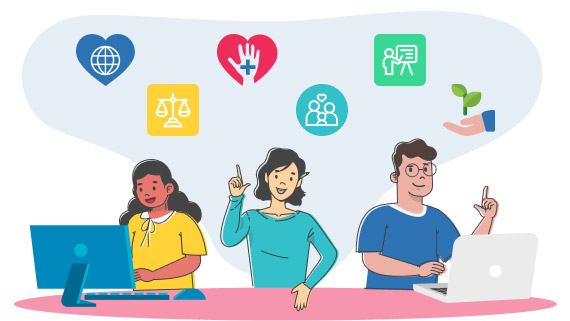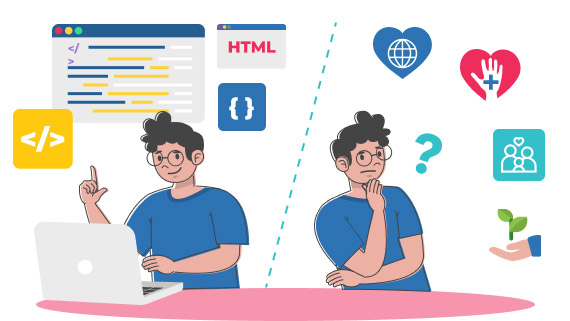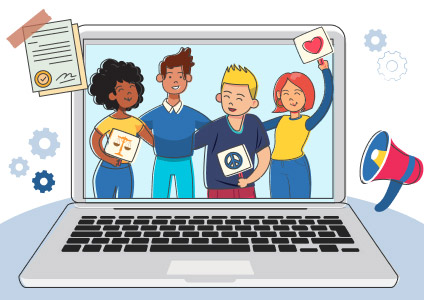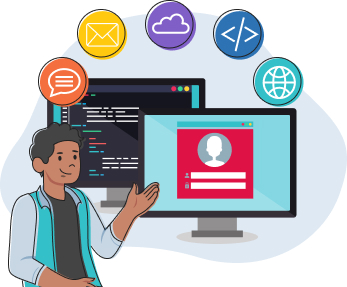Integrating Information Technologies into Social Services

Tutator Founders
février 22, 2021

Pitfalls and Recommendations
When deciding how to use new technologies and leverage them to improve what they are doing, social institutions will choose between a limited number of options. In this paper we review the most common ones, identify their limitations and offer some key guidelines for making choices.
The typical ways to do it
While for some this may sound like a simple problem, possibly properly addressed by a mere variation on a CRM, we contend that software development in the social space requires a brand-new approach.
Indeed, we currently see social institutions (be they NGO’s or social institutions within a government) struggling with how to leverage new technologies to improve their services or their efficiency:
They often turn to commercial software shops, who know what technology can do but have no clue what the problems they are trying to solve are.
While commercial shops will, with a straight face, tell you that this is not a problem and that they can quickly get up to speed, anybody that has been working on the social space for any length of time will tell you that this is not an easy task. Just like I will not turn into a brain surgeon in a matter of months, these bright engineers won’t learn what took others years of schooling and on-the-ground practice to learn.
The result will be a tool that solve what the engineers believe are the problems and will leave both parties with a lot of frustration.
Let’s face it: Information Technology as such doesn’t solve problems. Just like feeding plain flour to a hungry crowd won’t do them any good, what matters really is to leverage this technology and turn it into a valuable service for the participants.
Well-meaning engineers will talk all day long about acronyms such as NFC, RFID, GPS and HTML but it’s only when these are built into the right solution that they can become useful for the social space.
And doing that well requires a deep and sincere understanding of what the problems you are trying to solve are.
Some will go the other route and create their own engineering team internally.
While this is more likely to solve the problem of communication between the developers and the users, it does create a slew of other problems.
Indeed, managing a team of developers is a completely different ball of wax. From the skills and talents required all the way to the means and management styles, running a team of engineers has little in common with running a social institution. Starting with the vocabulary, there are challenges in having both teams interact. The organization of the team itself has to be suited for what it’s aimed at accomplishing.
In addition, in order to have a credible range of options, the institution will have to recruit a fairly large panel of engineers, each with his/her own specialty.
This will in turn make for a significant team that the institution will have to keep busy, or at least compensated, whether or not it has work for all of them.
Last, it will be difficult for the internal technology team to stay abreast of the latest technology because they will no longer be “in the loop”. While this may initially not matter too much, there is a real risk of knowledge obsolescence over time.

A new approach of the problem
We suggest the following key elements to be taken into account when designing your “technology solution”:
- Different trades require different organizations and trying to integrate a technology development team in a social institution is doomed.
- In order to acquire the right skills and then provide the required services, the technology development team needs to be solely focused on social applications.
- In the 20’s, technology development no longer is a game of:
“Writing requirements – Issuing an RFP – Evaluating the responses – Interviewing the shortlist – Picking the winner – Putting in place a contract – Waiting for the prototype to show up – Testing it and discovering it does not perform as expected – Negotiating with the supplier for changes in the specifications – Waiting for V 2.0 – etc.”.
- The key is to establish a long-term partnership with a team that will continue to work with you to provide the solutions and tools you need as time goes by.
Make sure to focus on establishing this long-term relationship and to put in the agreement elements that will keep the goals and objectives aligned for the years to come. Indeed, learning how to work with another entity is time- and energy-consuming so it is best to do it well from the start to avoid having to do it again too soon.
- A partner whose mission and goals are aligned with yours is key to your success.
Indeed, rather than being each on one side of the table when negotiating changes, it is more effective to share the same objectives and figure out the best way to get there.
Let’s face it, if you interact with a commercial entity, they are just a supplier to you and you need to keep in mind that their objective is (rightfully so) to maximize their return and thus, within the limits of wanting to keep you as a customer, to do as little as possible for as much money as possible. I don’t blame them, that’s what their investors are expecting from them.
If on the other hand you interact with a non-profit entity, they are more than just a supplier and more like a partner. Their interests are aligned with yours and they will work with you to, within reason, accommodate your new requirements and increase the impact of your social projects.
Conclusion
Technology offers a truly unique chance to revolutionize the way we deliver social services, with a tremendous impact on the participants.
Now, this has to be done right. We are talking about breaking new grounds here, there aren’t any user guides to help you do it properly.
We believe that we should aim way beyond simply reproducing what we are already doing and should take advantage of this transition to redefine what we do and how we do it.
This requires picking the right partner, the one that will both master the new technologies and understand the social space and needs.
The focus ought to be on building a long-term relationship with such partner as any change in that matter will be very detrimental to the institution and the services it is providing.
A partner whose mission is aligned with yours will better be able to help you accomplish your mission and deliver improved and more cost-effective services.
– –
In an upcoming paper, we will be exploring the topic of what new technologies can bring to what you are doing on a daily basis.

Gilles and Marie Concordel











